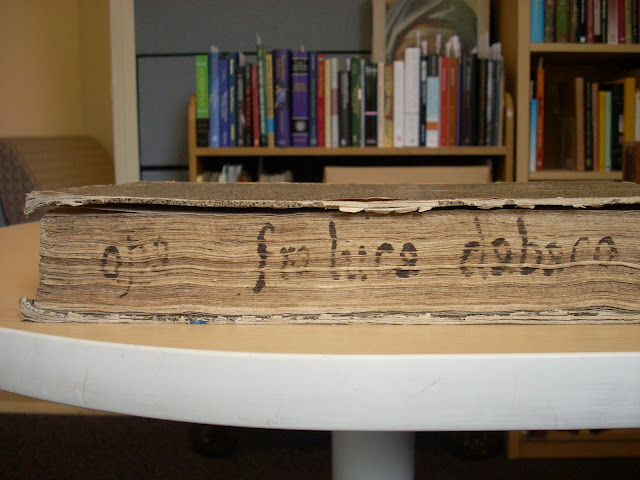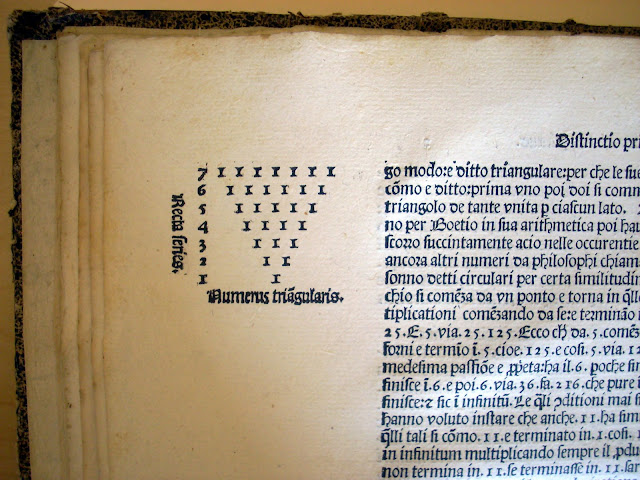
An Italian textbook of mathematics published in 1523. The dedication and notes are in Latin, the text in Italian. Most European books at the time were published entirely in Latin for an audience of nobles and churchmen. This early example of Italian vernacular printing would most likely have been marketed to traders and merchants with less elaborate educations.

The woodcut initial depicts a monk holding a compass in his left hand and a copy of the same book we are looking at in his right hand.


The author was indeed a monk, one Luca Pacioli (ca. 1445-1517). This edition was published posthumously. Many books of this period have the author and/or title inked in large letters onto the edges of the text block. Books were expensive and libraries were small. Individual volumes were most often stored flat on their sides rather than standing up with the spines facing out in the way we are used to. The information we expect to see on the spine was in past times supplied by hand along the fore-edge.


The present leather binding is much younger than the book itself. The text-block has probably used up three or four different bindings in the course of its life so far. Incredibly, some thoughtful soul in the 1960s or 70s decided to use a then-fashionable technology which involved letters or numbers being hand-punched onto plastic tape with an adhesive back. The plastic date of 1523 was affixed to the spine. At the library where I work we will send the book out to a conservator and have this idiotic intrusion safely removed. At the same time the leather can be reconditioned. It is at present dry and crumbly from neglect but will respond well to emollients.



Text-page margins are exceptionally wide and are used throughout for figures and illustrations.

Above is a perfect example of my favorite kind of discovery when working with rare old books. It is a torn scrap of manuscript from the same period as the publication, left in place for the past 500 years (almost) to mark this particular passage. I did not touch or disturb it.



The sections above contain story-problems (like the ones I remember from grammar school) about bags of grain and the volume of barrels. Presumably the simple, specific illustrations would help convince browsers that the purchase of the book might solve practical problems.

At the end we go back to Latin for the purpose of praising God for permitting us to live long enough with sufficient strength to get this project finished. In 1523.